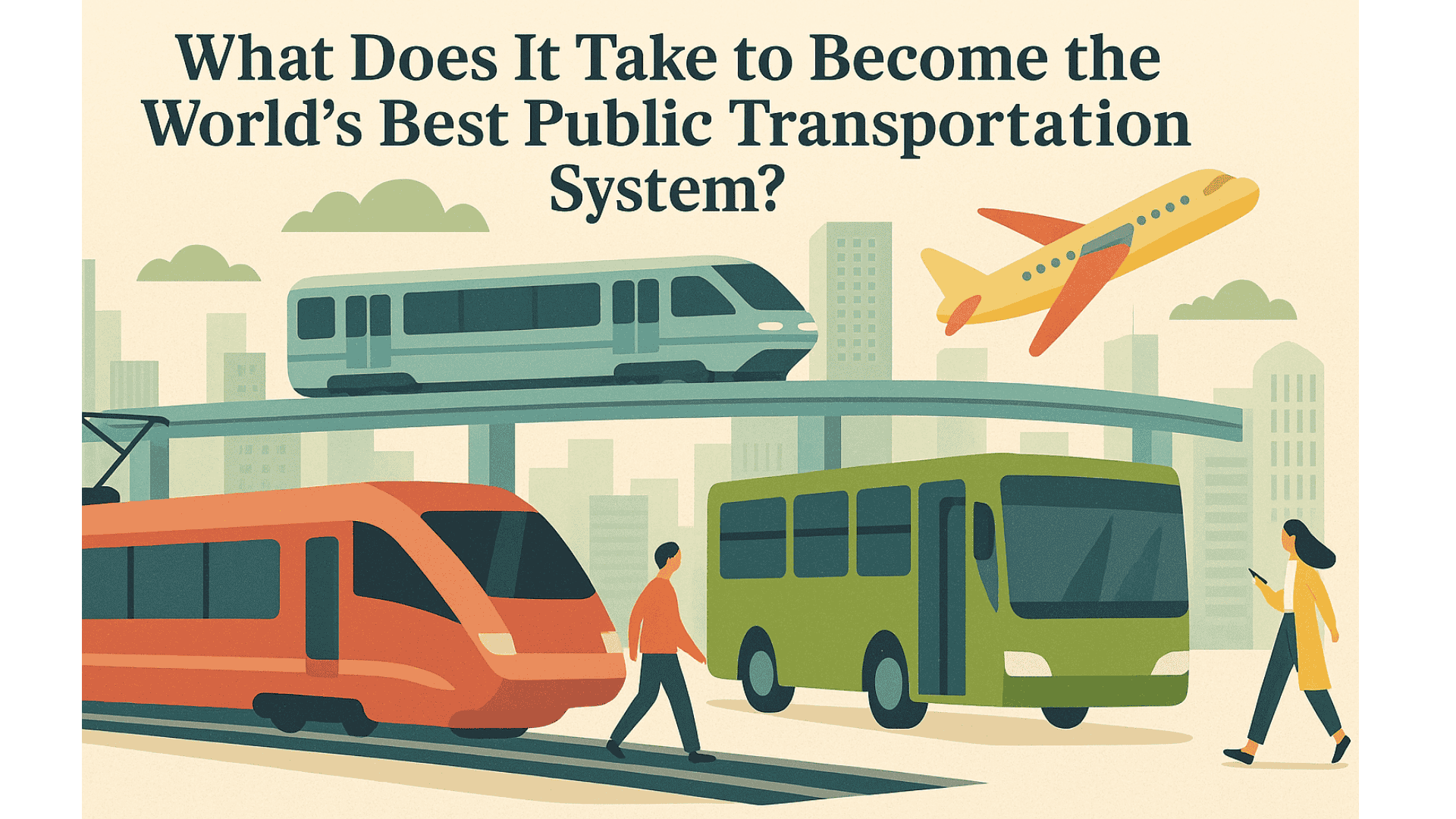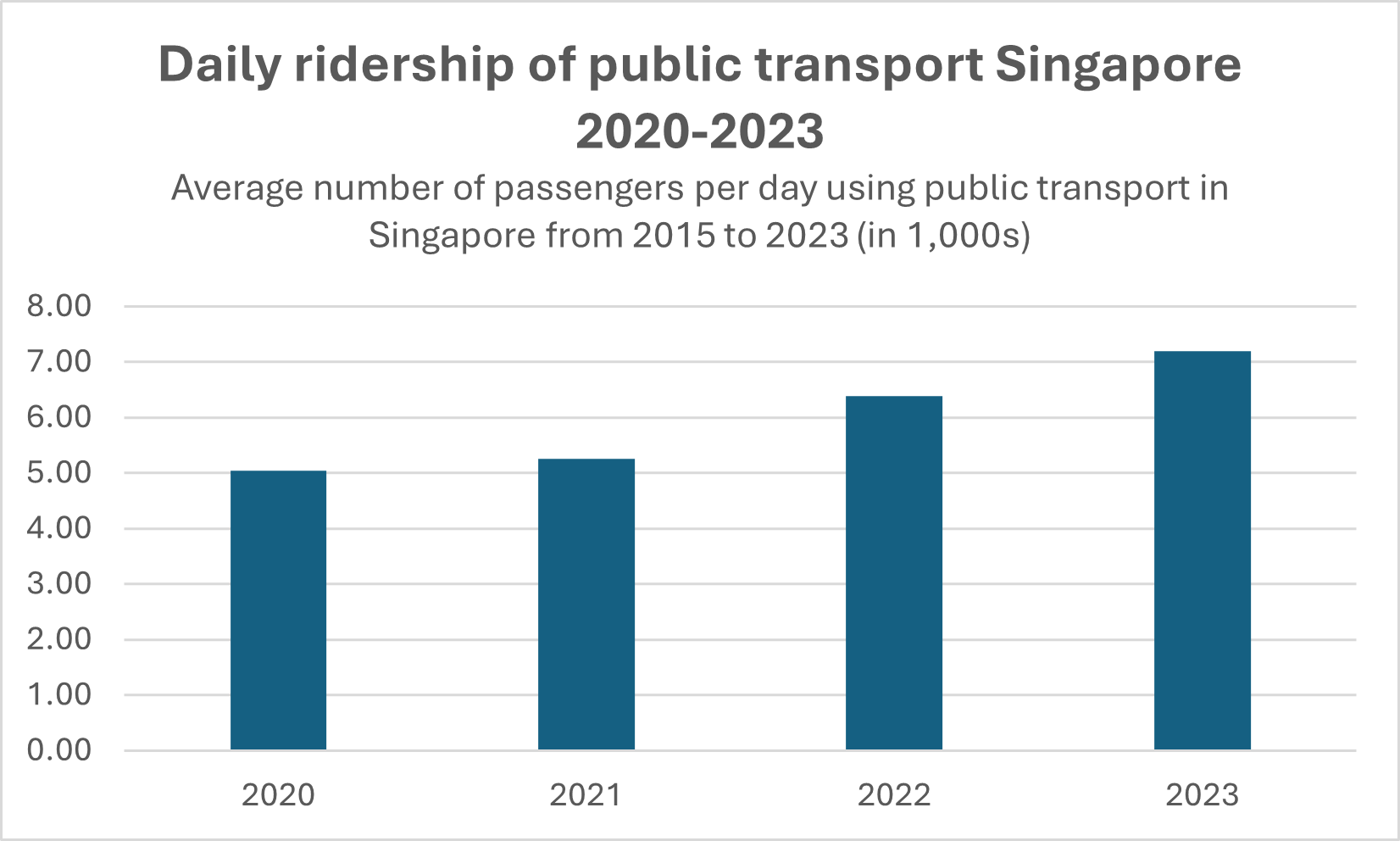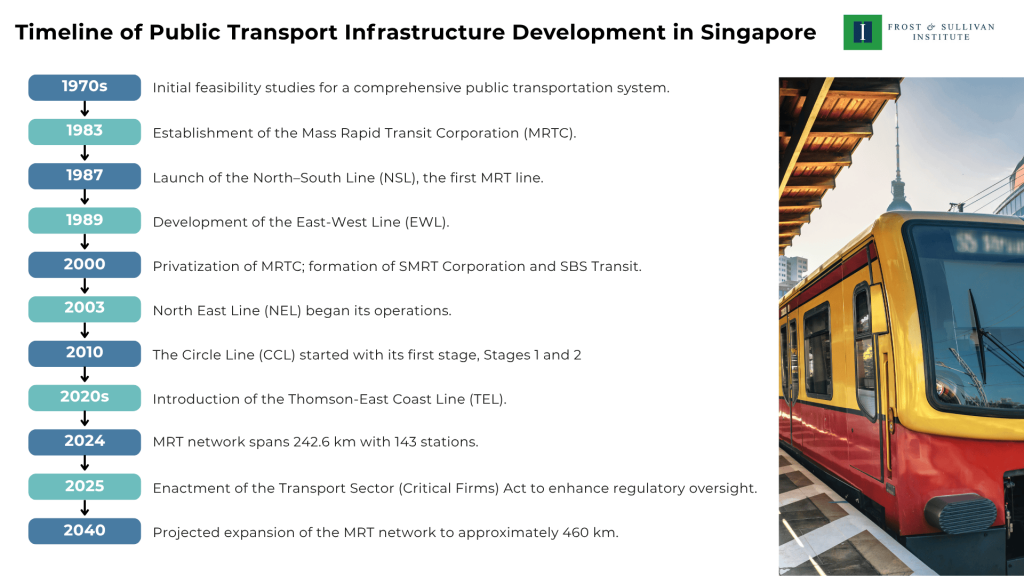
13 May What Does It Take to Become the World’s Best Public Transportation System?
Learnings from Singapore’s Successful Transportation System
A well-implemented public transport system plays a vital role in reducing vehicle emissions and alleviating urban congestion, while also delivering broad social benefits. Public transit can significantly lower the number of vehicles on the road by providing an efficient, affordable alternative to private car use, cutting greenhouse gas emissions, improving air quality, and reducing noise pollution. According to the U.S. Department of Transportation, public transportation produces 45% less carbon dioxide per mile than private vehicles. In densely populated cities, this reduction helps ease traffic congestion, shortening commute times and boosting productivity. Beyond environmental gains, public transit enhances mobility and social equity, giving people of all income levels access to jobs, education, and healthcare. Public transport is a lifeline to opportunity for lower-income communities or those without cars, helping bridge socioeconomic gaps and fostering more inclusive, connected urban environments.
A Look at Singapore’s Success
Singapore’s public transportation system is widely regarded as one of the best public transportation systems in the world, known for its efficiency, cleanliness, safety, and affordability. Singapore sets a global standard with its smart transport planning, real-time service updates, and strong government investment in infrastructure. This level of integration and reliability positions Singapore as a global leader in public transit. As of 2023, an average of approximately 7.2 million passengers used public transportation daily in Singapore, encompassing buses, the Mass Rapid Transit (MRT), and Light Rail Transit (LRT) systems.

source: Statista
The increasing number of passengers in Singapore’s public transportation service, which is often hailed as one of the world’s most efficient, reliable, and well-integrated systems, shows that it stands true. But what does it take to achieve such a status? Let’s delve into the infrastructure, policies, and development that have propelled Singapore to the forefront of urban mobility.
- Visionary Planning and Long-Term Strategy
The seeds for Singapore’s public transportation system were sown in the 1960s when the government recognized the need for a comprehensive public transportation network to accommodate the country’s growing population. Feasibility studies and debates culminated in 1982 with the establishment of the Mass Rapid Transit Corporation (MRTC) to oversee the construction and operation of the MRT system.
- Robust Infrastructure Development
The first MRT line, the North–South Line (NSL), commenced operations on November 7, 1987, with a 6 km stretch from Yio Chu Kang to Toa Payoh. Over the years, the network expanded, introducing lines like the East-West Line (EWL), North East Line (NEL), Circle Line (CCL), and Thomson-East Coast Line (TEL). As of 2024, the MRT network spans approximately 242.6 km with 143 stations, serving an average daily number of 3 million passengers.
- Integration of Bus and Rail Systems
Singapore’s public transportation is a seamless blend of bus and rail services. The Land Transport Authority (LTA) oversees the integration, ensuring synchronized schedules and unified fare systems. The introduction of the Light Rail Transit (LRT) system further complements the MRT by providing last-mile connectivity to residential areas.
- Adoption of Technology and Innovation
Embracing technology has been pivotal. The introduction of contactless payment systems like the EZ-Link card in the early 2000s revolutionized fare collection. More recently, the implementation of the Land Transport Master Plan 2040 focuses on enhancing digital services, such as real-time tracking and mobile ticketing, to improve the commuter experience.
- Sustainable and Green Initiatives
Singapore is committed to sustainability. The adoption of electric buses, energy-efficient trains, and green building standards for stations reflects this commitment. The ongoing development of the Cross Island Line, expected to be completed by 2040, will further reduce the city’s carbon footprint by providing more eco-friendly transportation options.
- Responsive Policies and Governance
The government’s proactive approach ensures the system’s resilience. For instance, the Transport Sector (Critical Firms) Act, enacted in April 2025, subjects 17 key transport companies to heightened regulatory scrutiny to safeguard against potential threats. Such measures underscore the importance of governance in maintaining a robust transportation network.
- Continuous Expansion and Future Outlook
The future of Singapore’s public transportation looks promising. With plans to expand the MRT network to approximately 460 km by 2040, the city-state aims to provide comprehensive coverage, ensuring that more residents have access to efficient public transport options.
Singapore’s journey to becoming a global leader in public transportation is a testament to visionary planning, strategic investments, and adaptive governance. By continuously evolving and prioritizing the needs of its citizens, Singapore sets a benchmark for cities worldwide aspiring to develop world-class public transportation systems.

Blog by Shreya Ghimire,
Research Analyst, Frost & Sullivan Institute
